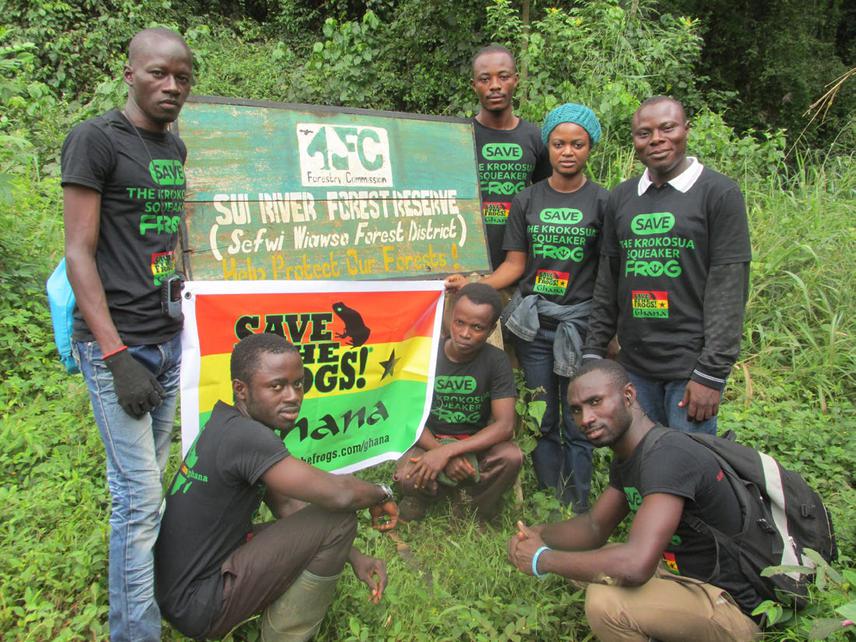Gilbert Baase Adum
Other projects
12 Aug 2010
Conservation of the Ghanaian Endemic Frog Species, Arthroleptis krokosua, Ghana
19 Dec 2014
Saving the Remaining Population of Ghana’s Critically Endangered Giant Squeaker Frog (Arthroleptis krokosua)
18 Apr 2016
Scaling up Activities for the Protection of Ghana’s Iconic Giant Squeaker Frog (Arthroleptis krokosua) and Co-occurring Endangered Species
The project seeks to restore the habitats of Ghana’s Critically Endangered Giant Squeaker Frog (Arthroleptis krokosua), with the long-term aim of establishing corridors between sites.

Gilbert Adum with project team and student trainees. © Save the Frogs Ghana!
Ghana’s Giant Squeaker Frog (Arthroleptis krokosua) is evolutionarily distinct, and IUCN Endangered. The species is rare, i.e. amphibian assessments in other Ghanaian and eastern Ivorian forests failed to detect it, with the exception of Ernst et al. (2008) and Adum et al. (2011). To date only 12 individuals are known to exist, restricted to only the Sui River Forest Reserve in Western Ghana (Adum et al. 2011, 2013). Unfortunately, the combination of mining, logging and the invasive Chromolaena odorata has contributed to the species’ decline and prevents its recovery from the brink of extinction.
Within the species’ habitat ranges, C. odorata is widespread (Adum et al. 2011, 2013), and forms dense thickets that impede the frogs’ movement; it also releases chemicals into the soil that prevent the growth of native plants. Additionally, C. odorata depletes the density of leaf-litter that the Squeaker Frogs utilize for predator escape, breeding activities and protection from desiccation. Thus, we will clear C. odorata to provide habitat conditions for the species and quicken its recovery process from the brink of extinction.
Large areas of the Squeaker Frog’s habitat ranges have been fragmented resulting from past
extensive logging and farming activities (Adum et al. 2013). Through past interventions on our 1st RSG project, farmers relocated their farms, and some loggers also abandoned their activities. To connect the fragmented areas we will plant an estimated 2,000 fast-growing native trees (Terminalia superba, T. ivoriensis and Ceiba pentandra). Establishing these vegetation corridors between sites will increase the Squeaker Frog’s population sustainability in the long-term.
Our conservation efforts will also ensure that conservation actions of our past RSG project are expanded and consolidated for the overall protection of the reserve. In particular, we will institute SAVE THE FROGS! Ghana’s chapters in two nearby local schools through which we will educate the students, and will help ensure they grow up with respect and appreciation for not only the Squeaker Frog but also overall nature and wildlife.